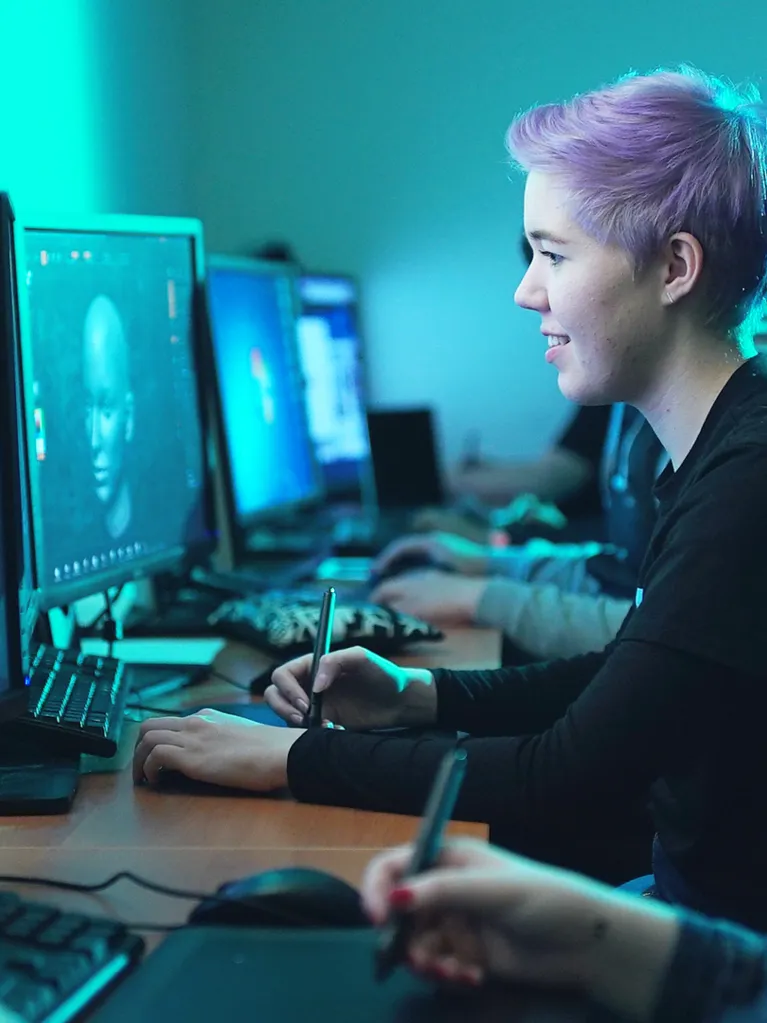Learn to design and develop characters and worlds – from concept to finished art – and create believable character performances and arresting graphical motion.
Focus in what you are passionate about with a Bachelor of Creative Arts (Animation). Select from a list of primary and secondary streams to hone in on your skills as an animator. Choose to focus in either 2D animation, 3D animation, or do both.
Add Game Design, CG (Computer Generated) Art or Production Art for the opportunity to combine both technical knowledge and artistic practice as you build a professional portfolio and expand your studio practice. Immerse yourself in an exciting journey from concept to finished product through the magic of visual storytelling.
Why Study Animation at JMC?
Technology & Facilities
During this course you will be able to access the Full Adobe Creative Cloud Suite, Autodesk Maya, Wacom Intuos Pro and Cintiq tablets, Animation lightboxes + line testers, ball and socket stop-motion rigs, Dragonframe stop-motion software, 18-camera motion-capture suites, VR facilities, green-screen studios, renderers (Redshift, Pixar RenderMan, Arnold), Substance Painter for texturing, Zbrush for sculpting, Compositing tools (After Effects, Nuke), Katana for Look Development and Shotgun Studio for Project Planning and Management.
Duration
In only 2 years you can graduate with a Bachelor degree thanks to our accelerated full-time course. Part-time study is also available to domestic students. International students may choose to complete the course in 3 years [CRICOS 058460D] rather than the accelerated 2 year option.
Students who have successfully completed 4 trimesters of the Bachelor programme may successfully graduate with an Associate Degree qualification.
The Dutch Exchange
Take your passion to Europe and spend an entire trimester at Fontys Academy for Creative Industries in the Netherlands. Collaborate with creative students from all over the world and build your international contacts along the way.











